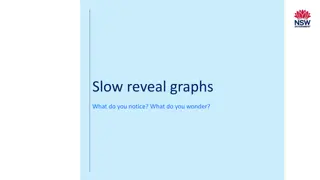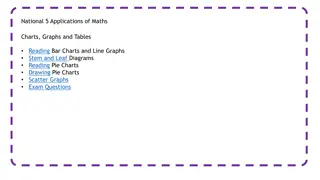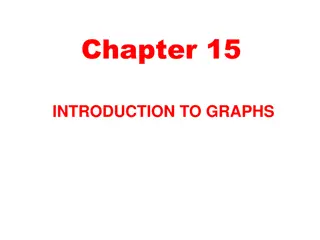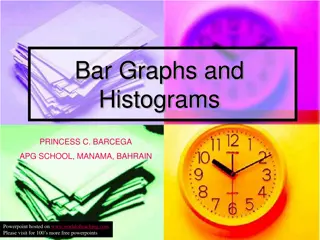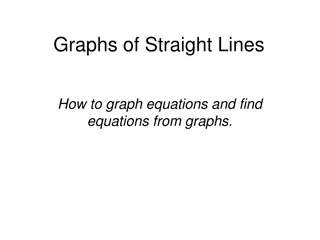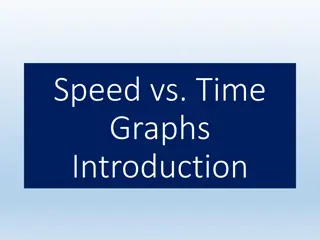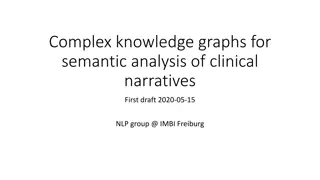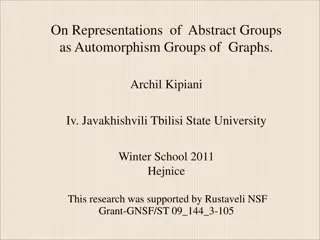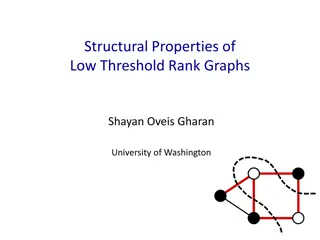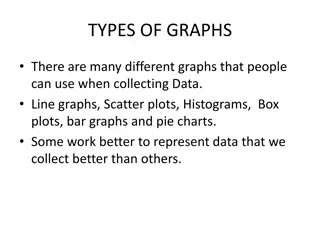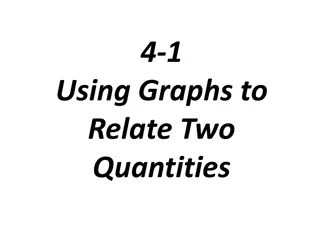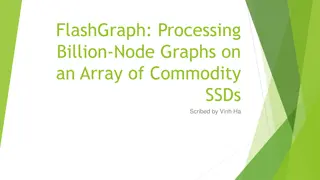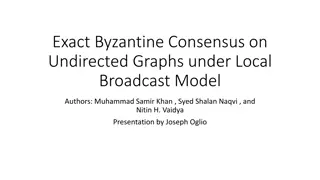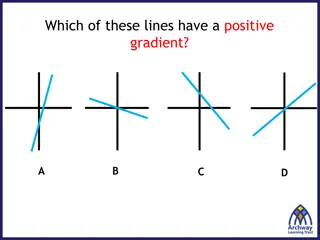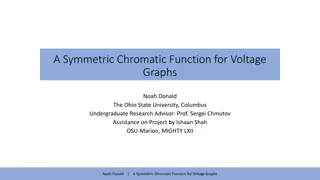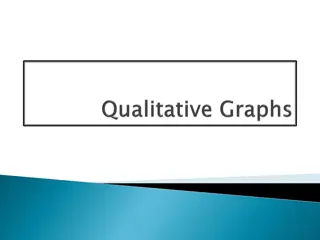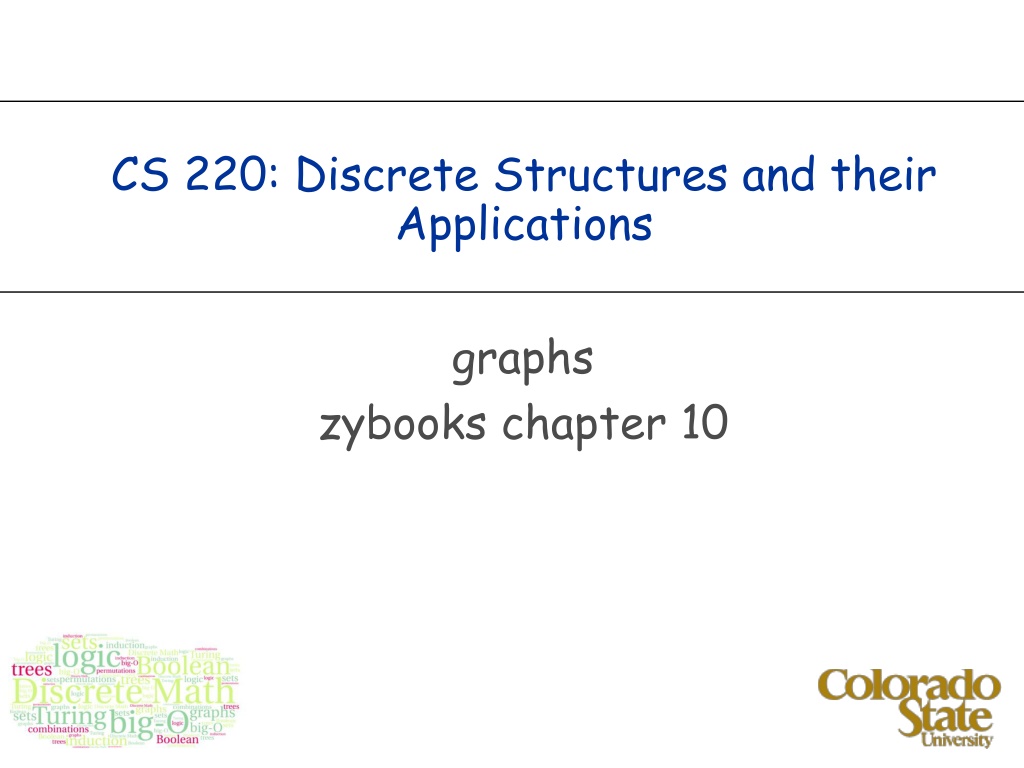
Understanding Graph Theory Fundamentals and Applications
Explore the basics of graph theory, including directed and undirected graphs, graph definitions, terminology, constraints in scheduling, the handshake theorem, and subgraphs. Learn about paths, cycles, acyclic and complete graphs, connectivity, and more. Discover how graphs are used to represent relationships and solve real-world problems.
Download Presentation

Please find below an Image/Link to download the presentation.
The content on the website is provided AS IS for your information and personal use only. It may not be sold, licensed, or shared on other websites without obtaining consent from the author. Download presentation by click this link. If you encounter any issues during the download, it is possible that the publisher has removed the file from their server.
E N D
Presentation Transcript
CS 220: Discrete Structures and their Applications graphs zybooks chapter 10
directed graphs A collection of vertices and directed edges What can this represent?
undirected graphs A collection of vertices and edges What can this represent?
terminology Two vertices are adjacent if they are connected by an edge. G=(V, E) Vertices Edges The vertices are the endpoints of an edge Edges An edge is incident on two vertices. u Two vertices are neighbors if they are connected by an edge e Vertices/ Nodes The number of neighbors of a vertex is its degree. v
Graph definitions Path: sequence of nodes (v0..vn) s.t. i: (vi ,vi+1) is an edge. Path length: number of edges in the path, or sum of weights. Simple path: all nodes distinct. Cycle: path with first and last node equal. Acyclic graph: graph without cycles. DAG: directed acyclic graph. In a complete graph all nodes in the graph are adjacent.
more definitions An undirected graph is connected if for all nodes vi and vj there is a path from vi to vj . An undirected graph can be partitioned in connected components: maximal connected sub-graphs. A directed graph can be partitioned in strongly connected components: maximal sub-graphs C where for every u and v in C there is a path from u to v and there is a path from v to u. In a weighted graph the edges have a weight (cost, length,..) associated with them.
constraint graphs Consider the problem of classroom scheduling: given a set of classes and their times, assign them to classrooms without conflicts. Example: Class A: MWF, 3:00PM - 4:00PM Class B: W, 2:00PM - 4:00PM Class C: F, 3:30PM - 5:00PM Class D: MWF, 2:30 - 3:30PM Which is the constraint graph for this scheduling problem?
the handshake theorem Can here be a graph with an odd number of odd degree nodes? Try it . . . Theorem: Let G=(V,E) be an undirected graph. Then v V =2|E | deg(v)
subgraphs A graph H = (VH, EH) is a subgraph of a graph G = (VG, EG) if VH VG and EH EG.
complete graphs A complete graph is a simple graph that has an edge between every pair of vertices. The complete graph with n vertices is denoted by Kn K4: Complete Graph
cycles The cycle Cn, n 3, consists of n vertices v1, v2, , vnand n edges {v1, v2}, {v2, v3}, , {vn-1, vn}, {vn, v1}.
looks can be misleading Consider the following two graphs: Are they the same?
adjacency matrix of a graph A mapping of vertex labels to array indices 0 1 1 0 0 1 0 2 0 0 0 0 1 3 1 0 0 0 0 4 0 1 0 0 0 B C 0 0 1 0 2 1 3 0 4 0 Label Index A B C D E 0 1 2 3 4 D E Adjacency matrix: n x n matrix with entries that indicate if an edge between two vertices is present For an undirected graph, what would the adjacency matrix look like?
adjacency list for a directed graph A Index Label B B B D 0 A B C E 1 B A 2 C B 3 D D C 4 E E
adjacency list for an undirected graph A Index Label B C D B C 0 A A D E 1 B A E 2 C D 3 D A B E 4 E B C mapping of vertex labels to list of edges
walks A walk from v0 to vl in an undirected graph G is a sequence of alternating vertices and edges that starts and ends with a vertex: v0,{v0,v1},v1,{v1,v2},v2,...,vl 1,{vl 1,vl},vl v0 e1 A walk can also be denoted by the sequence of vertices: v0,v1,...,vl . The sequence of vertices is a walk only if {vi-1, vi} E for i = 1, 2,...,l. The length of a walk is l, the number of edges in the walk. v1 v3 e2 e3 v2
walks, circuits, paths, cycles A circuit is a walk in which the first vertex is the same as the last vertex. A sequence of one vertex, denoted <a>, is a circuit of length 0. A walk is a path if no vertex is repeated in the walk. A circuit is a cycle if there are no other repeated vertices, except the first and the last. v0 e1 v1 v3 e2 Same as in directed graphs. e3 v2
walks, circuits, paths, cycles A circuit is a walk in which the first vertex is the same as the last vertex. A walk is a path if no vertex is repeated in the walk. A circuit is a cycle if there are no other repeated vertices, except the first and the last. What is the length of the longest possible walk in a graph with n vertices? What is the length of the longest possible path in a graph with n vertices? What is the length of the longest possible circuit in a graph with n vertices? What is the length of the longest possible cycle in a graph with n vertices?
Graph Traversal What can cause problems when walking graphs? you can visit the same node more than once you can get in a cycle What to do about it: mark the nodes -White: unvisited -Grey: (still being considered) on the frontier: not all adjacent nodes have been visited yet -Black: off the frontier: all adjacent nodes visited (not considered anymore)
BFS: Breadth First Search Like level traversal in trees, BFS(G,s) explores the edges of G and locates every node v reachable from s in a level order using a queue.
BFS: Breadth First Search Like level traversal in trees, BFS(G,s) explores the edges of G and locates every node v reachable from s in a level order using a queue. BFS also computes the distance: number of edges from s to all these nodes, and the shortest path (minimal #edges) from s to v.
BFS: Breadth First Search Like level traversal in trees, BFS(G,s) explores the edges of G and locates every node v reachable from s in a level order using a queue. BFS also computes the distance: number of edges from s to all these nodes, and the shortest path (minimal #edges) from s to v. BFS expands a frontier of discovered but not yet visited nodes. Nodes are colored white, grey or black. They start out undiscovered or white.
BFS(G,s) #d: distance, c: color, p: parent in BFS tree forall v in V-s {c[v]=white; d[v]= ,p[v]=nil} c[s]=grey; d[s]=0; p[s]=nil; Q=empty; enque(Q,s); while (Q != empty) u = deque(Q); forall v in adj(u) if (c[v]==white) c[v]=grey; d[v]=d[u]+1; p[v]=u; enque(Q,v) c[u]=black; # don t really need grey here, why?
Do it: Breadth First Search, s = 1 L0 L1 L2 L3
Complexity BFS Each node is painted white once, and is enqueued and dequeued at most once.
Complexity BFS Each node is painted white once, and is enqueued and dequeued at most once. Why?
Complexity BFS Each node is painted white once, and is enqueued and dequeued at most once. Enque and deque take constant time. The adjacency list of each node is scanned only once: when it is dequeued.
Complexity BFS Each node is painted white once, and is enqueued and dequeued at most once. Enque and deque take constant time. The adjacency list of each node is scanned only once, when it is dequeued. Therefore time complexity for BFS is O(|V|+|E|) or O(n+m)
DFS: Depth First Search Explores edges from the most recently discovered node; backtracks when reaching a dead-end. The algorithm below does not use white, grey, black, but uses explored (and implicitly unexplored). Recursive code: DFS(u): mark u as Explored and add u to R for each edge (u,v) : if v is not marked Explored : DFS(v)
Recursive / node coloring version DFS(u): #c: color, p: parent c[u]=grey forall v in Adj(u): if c[v]==white: p[v]=u DFS(v) c[u]=black The above implementation of DFS runs in O(m + n) time if the graph is given by its adjacency list representation. Proof: Same as in BFS
32 Connectivity s-t connectivity problem. Given two node s and t, is there a path between s and t? s-t shortest path problem. Given two nodes s and t, what is the length of the shortest path between s and t? Length: either in terms of number of edges, or in terms of sum of weights.
connected components An undirected graph is called connected if there is a path between every pair of vertices. A connected component is a maximal set of vertices that is connected. The word "maximal" means that if any vertex is added to a connected component, then the set of vertices will no longer be connected.
Connected Components Connected graph. There is a path between any pair of nodes. Connected component of a node s. The set of all nodes reachable from s. Connected component containing node 1 = { 1, 2, 3, 4, 5, 6, 7, 8 }.
Connected Components Connected component of a node s. The set of all nodes reachable from s. Given two nodes s, and t, their connected components are either identical or disjoint. WHY?
36 Connected Components Connected component of a node s. The set of all nodes reachable from s. Given two nodes s, and t, their connected components are either identical or disjoint. Two cases either there is a path between the two nodes, or there isn t. If there is a path: take a node u in the connected component of s, and construct a path from t to u: t to s, then s to u, so CCs = CCt If there is no path: assume that the intersection contains a node u. Use it to construct a path between s and t: s to u, then u to t contradiction.
37 Connected Components R s A generic algorithm for finding connected components: u v R = {s} # the connected component of s is initially s. while there is an edge (u,v) where u is in R and v is not in R: add v to R Upon termination, R is the connected component containing s. BFS: explore in order of distance from s. DFS: explores edges from the most recently discovered node; backtracks when reaching a dead-end.
The facebook graph 721 million active accounts 68.7 billion friendship edges (median number of friends = 99) The largest connected component of facebook users contains 99.9% of the users Average distance between any pair of users: 4.7 source: http://arxiv.org/pdf/1111.4503v1.pdf




